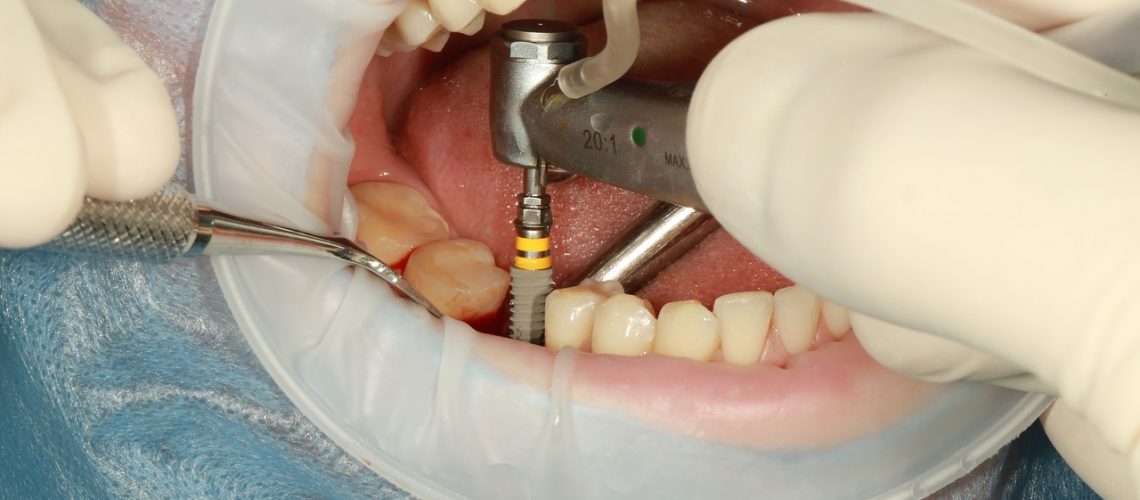Some Ideas on Dental Sense You Need To Know
Some Ideas on Dental Sense You Need To Know
Blog Article
Dental Sense Things To Know Before You Get This
Table of ContentsDental Sense Fundamentals ExplainedGet This Report on Dental Sense5 Easy Facts About Dental Sense DescribedWhat Does Dental Sense Do?
are clinical tools surgically implanted into the jaw to restore a person's capability to eat or their appearance. They offer support for man-made (phony) teeth, such as crowns, bridges, or dentures. When a tooth is shed because of injury or condition, a person can experience complications such as fast bone loss, malfunctioning speech, or adjustments to eating patterns that lead to pain.Dental implant systems contain a dental implant body and dental implant abutment and may likewise consist of a joint addiction screw. Front tooth filling. The dental implant body is surgically placed in the jawbone in place of the tooth's origin. The dental implant abutment is usually affixed to the implant body by the joint addiction screw and expands via gum tissues right into the mouth to sustain the attached artificial teeth
(https://experiment.com/users/dentalsense1)Structure of The Dental Implant System selecting oral implants, speak to your oral supplier concerning the possible advantages and dangers, and whether you are a candidate for the treatment. Points to consider: Your total health and wellness is an important factor in figuring out whether you are a great prospect for dental implants, the length of time it will certainly require to recover, and how long the dental implant may remain in area.
Smoking might affect the recovery process and reduce the long-term success of the dental implant. The recovery procedure for the dental implant body might take a number of months or longer, throughout which time you typically have a short-lived joint in area of the tooth. the dental implant procedure: Thoroughly comply with the oral hygiene guidelines provided to you by your dental copyright.
An Unbiased View of Dental Sense
Implant failure can cause the need for another medical procedure to take care of or change the dental implant system. Recovers the ability to chew Restores aesthetic look Helps keep the jawbone from diminishing as a result of bone loss Preserves the health and wellness of the surrounding bone and gums Aids keep nearby (close-by) teeth secure Boosts high quality of life Damage to surrounding natural teeth during implant positioning Injury to the surrounding tissues during surgical procedure, such as sinus perforation Injury throughout surgical treatment (as an example, fracture of surrounding jawbone) Poor feature, such as feeling like the teeth do not attack together usually A feeling that the tooth is loose or twisting in position resulting from a joint screw loosening up Implant body failure (looseness of the dental implant body) due to systemic infection, which might be more probable in patients with unchecked diabetes because of neighborhood infection in bone and gums supporting the dental implant body due to delayed healing, which might be most likely in individuals that smoke Difficulty cleansing the gums around the implant, leading to bad dental hygiene Unattended gum disease Post-surgical pins and needles due to nerve impingement or damages Constantly notify health care carriers and imaging professionals that you have dental implants before any kind of magnetic resonance imaging (MRI) or x-ray treatments.
FDA is not familiar with any type of adverse occasions reported for MRI or x-ray treatments with dental implants. Dental implants systems are usually constructed from products that adhere to international consensus standards of the International Company for Standardization (ISO) or ASTM International. These criteria have details of what makes a risk-free product.

An oral implant is a framework that changes a missing out on tooth. With screw-like devices, the doctor inserts a dental implant right into the jawbone, and it acts he has a good point as an anchor for an artificial tooth, called a crown. A gadget called an abutment links the fabricated tooth to the oral implant. The crown is custom-made to fit the individual's mouth and match the color of their teeth.
Some Known Factual Statements About Dental Sense
Some individuals are not qualified for dental implant surgical treatment. It is for dental cosmetic surgeons to operate individuals with: severe illnessuncontrollable metabolic diseasebone or soft tissue disease or infectionIf these concerns are settled, an individual can have the surgical treatment. In, dental surgeons refrain from operating people with: If people with any of the above undertake oral implant surgery, there is a greater danger of the implant failing.

Oral implant surgery is an individualized process. Give you time to recover. Attach the post and last crown, bridge or denture.
Next, your specialist will very carefully put the dental implant right into your jaw. If your dental implant is near the front of your mouth, your dental practitioner will certainly make a temporary tooth for you to put on up until you heal.
The 6-Second Trick For Dental Sense
Your copyright can inform you what to anticipate in your scenario. Throughout the recovery phase, your jawbone should fuse to the dental implant. This procedure, called osseointegration, is essential for stability and long-lasting success. This procedure can take anywhere from 3 to nine months. In many cases, it might take much longer.
Once your implant heals, your dental professional can attach the abutment (little port message) and your final repair (crown, bridge or denture). This typically takes about one hour to finish and may call for a 2nd minor surgery. You shouldn't feel any kind of pain throughout your dental implant treatment since your supplier will use medicine to numb your gum tissues.
Report this page